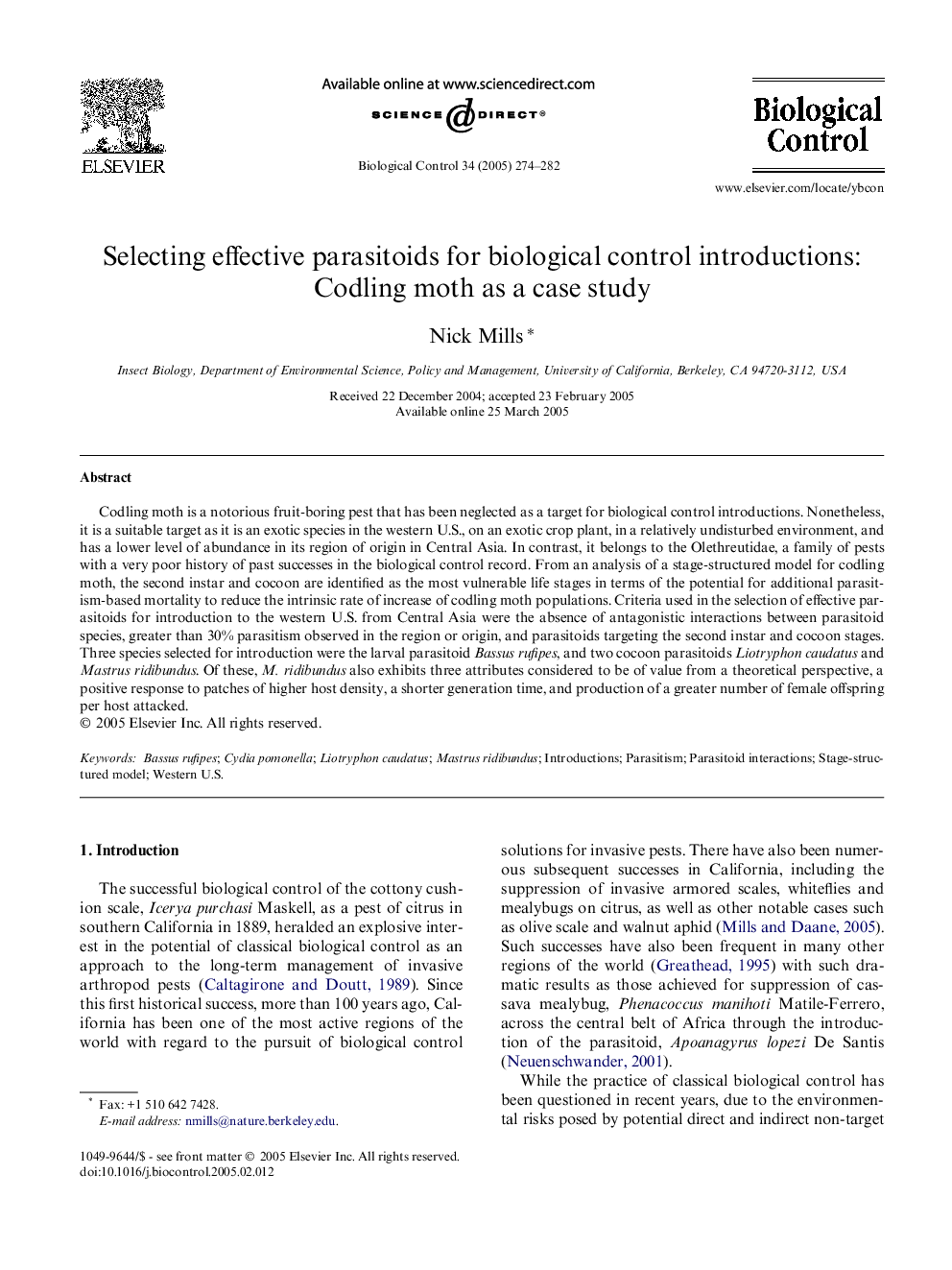| کد مقاله | کد نشریه | سال انتشار | مقاله انگلیسی | نسخه تمام متن |
|---|---|---|---|---|
| 9471988 | 1321151 | 2005 | 9 صفحه PDF | دانلود رایگان |
عنوان انگلیسی مقاله ISI
Selecting effective parasitoids for biological control introductions: Codling moth as a case study
دانلود مقاله + سفارش ترجمه
دانلود مقاله ISI انگلیسی
رایگان برای ایرانیان
کلمات کلیدی
موضوعات مرتبط
علوم زیستی و بیوفناوری
علوم کشاورزی و بیولوژیک
علوم زراعت و اصلاح نباتات
پیش نمایش صفحه اول مقاله

چکیده انگلیسی
Codling moth is a notorious fruit-boring pest that has been neglected as a target for biological control introductions. Nonetheless, it is a suitable target as it is an exotic species in the western U.S., on an exotic crop plant, in a relatively undisturbed environment, and has a lower level of abundance in its region of origin in Central Asia. In contrast, it belongs to the Olethreutidae, a family of pests with a very poor history of past successes in the biological control record. From an analysis of a stage-structured model for codling moth, the second instar and cocoon are identified as the most vulnerable life stages in terms of the potential for additional parasitism-based mortality to reduce the intrinsic rate of increase of codling moth populations. Criteria used in the selection of effective parasitoids for introduction to the western U.S. from Central Asia were the absence of antagonistic interactions between parasitoid species, greater than 30% parasitism observed in the region or origin, and parasitoids targeting the second instar and cocoon stages. Three species selected for introduction were the larval parasitoid Bassus rufipes, and two cocoon parasitoids Liotryphon caudatus and Mastrus ridibundus. Of these, M. ridibundus also exhibits three attributes considered to be of value from a theoretical perspective, a positive response to patches of higher host density, a shorter generation time, and production of a greater number of female offspring per host attacked.
ناشر
Database: Elsevier - ScienceDirect (ساینس دایرکت)
Journal: Biological Control - Volume 34, Issue 3, September 2005, Pages 274-282
Journal: Biological Control - Volume 34, Issue 3, September 2005, Pages 274-282
نویسندگان
Nick Mills,